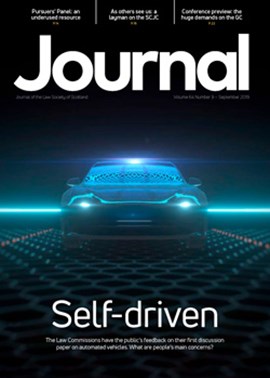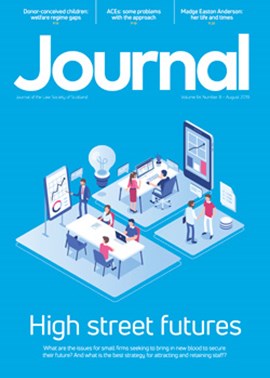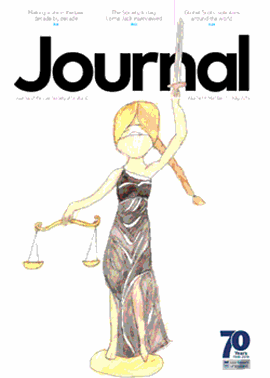The means by which Keeper-induced Registration (KIR) could be used to help achieve Registers of Scotland’s (RoS) objective of completing the Land Register has now been published in a consultation report. KIR is a new power, introduced through the 2012 Act, which allows the keeper to add titles onto the Land Register without an application from the owner.
Scottish ministers have invited the keeper to complete the Land Register by 2024 for all private land and by 2019 for all publicly owned titles. A completed Land Register will mean Scotland has one comprehensive land and property register which will provide clarity of ownership all across the country.
Land and property owners will benefit once on the register, as it has a state-backed warranty of title. In future, this will make transactions quicker, cheaper and easier.
The Land Register completion team within RoS is actively promoting these benefits to landowners in the public and private sectors to encourage voluntary registrations, and all applicants will receive a 25% discount in RoS voluntary registration fees up to at least 2017.
“Research areas”
A number of pilot projects to establish what type of property KIR could be used for have been carried out by RoS over the last few months. The results showed that the type of properties that best lend themselves to KIR are those within “research areas”. These are areas where RoS has identified the rights and burdens relevant to each
Sheenagh Adams, Keeper of the Registers of Scotland, said: “I believe that having a completed, map-based, digitised Land Register will be a national asset for Scotland as it will provide a clear picture of who owns what and where.
“It will benefit all land and property owners as, once a property is on the register, it provides clarity of ownership backed by a state guarantee. In future, it will make transactions quicker, cheaper and easier.
“I have established a dedicated team, who are working on completing the Land Register in line with the aspirations of Scottish ministers. At present, our focus is on encouraging larger landowners to bring forward voluntary applications to the Land Register, as it will make trading on their land more straightforward and cost-efficient. This will also add large volumes of land onto the Land Register map.
“KIR will allow me to add titles where I can safely identify the boundaries, and where the burdens and rights that go along with the area of land are straightforward. I’d encourage anyone with an interest in land registration to participate in the KIR consultation.”
National asset
Minister for Business, Energy and Tourism, Fergus Ewing, said: “A completed Land Register on an easily accessible, public, digitised map will benefit home and landowners across Scotland by providing clarity on who owns what and where.
“While Registers of Scotland is focused on encouraging voluntary applications to the Land Register in this initial phase, it is only right that other mechanisms are put in place to help achieve the goal of completion within the timeframe.
“Other titles will come onto the register through certain triggers, such as house sales, but by using the Keeper-induced Registration (KIR) option, property titles can be added to the Land Register more rapidly.
“This consultation provides an opportunity to have a say on how the KIR process should work and I would encourage anyone with an interest to get involved.
“The Scottish Government remains committed to completing the Land Register as we believe it will be a national asset for Scotland.”
The full consultation report is available to read on the RoS website, and a number of questions are asked in relation to how KIR could be used going forward. All views are welcome.
Over the next 12 weeks, RoS will be actively engaging with stakeholders across a wide variety of sectors to seek views on whether our approach is the correct way forward.
A series of roadshows will be held in November across the country to take feedback on our proposals, and this will be used along with the consultation responses to inform final RoS policy for implementing KIR in order to progress Land Register completion.
In this issue
- Land registration and leases
- Disharmony and disharmonising
- FCA reviews: not the end of the story?
- A host of claims for guests
- Pensions auto-enrolment: some clarity for trainees
- Reading for pleasure
- Opinion: Stewart Cunningham and Nadine Stott
- Book reviews
- Profile
- President's column
- KIR: have your say
- People on the move
- You and whose mind?
- Deil tak the hindmost
- Cultivating judgment
- Women: paths to power
- Sorry: no longer the hardest word?
- Fairness in the balance
- Minimum pricing: the latest
- Planning: shakeup on the way?
- New burdens for employers?
- Scottish Solicitors Discipline Tribunal
- Ancillary rights as real rights
- Life at the cutting edge
- One form if firms hold client money
- Further fraud alerts issued
- Law reform roundup
- Guidance: duties re legal rights
- From the Brussels office
- Rights in chaos: asylum seekers and migrants in the EU
- Mirror wills: can I change?
- Renewal: the impetus for review
- Ask Ash
- The day of minimis is here
- If it ain't broken...?
- The voice of youth







